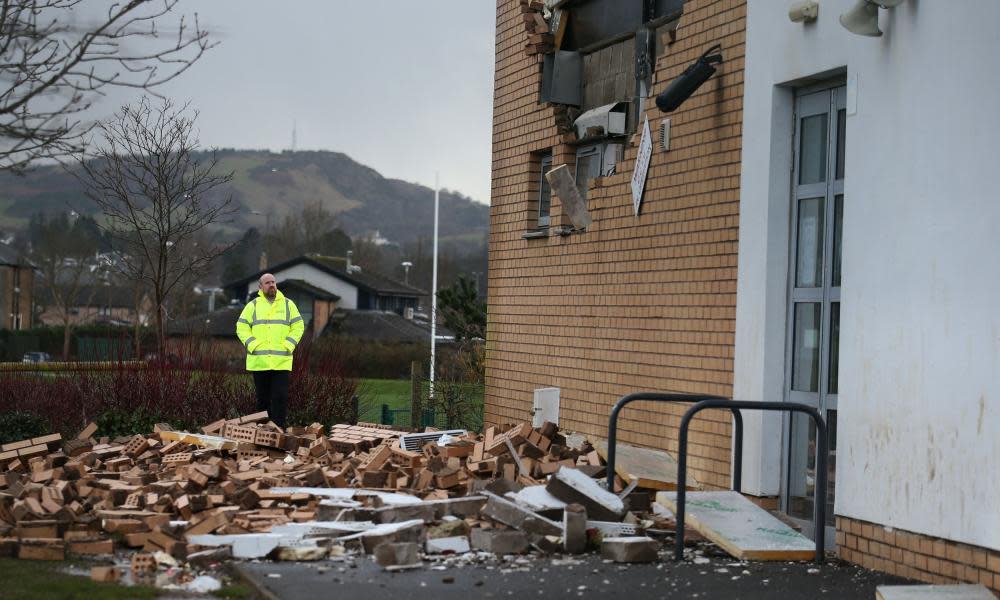We must ensure all Scottish public buildings are safe | Neil Baxter

The knee-jerk reaction to last week’s calls by the Scottish government and subsequently by the Royal Incorporation of Architects in Scotland (RIAS) for urgent action over all Scottish public buildings created through private finance initiatives seems mainly to be a sad rush to find space on bookshelves for John Cole’s 272 pages of considered reporting.
That is a great pity. It seems, at best, ill-considered to dismiss the Cole inquiry’s relevance to buildings elsewhere built under similar regimes to the Edinburgh schools. Perhaps some see the pending local elections in May as an opportunity to pass on the whole issue.
It is crucially important that we don’t lose sight of what triggered all this – 19 tonnes of masonry falling from a great height into a primary school playground in January 2016. It happened at night, when the school was closed so, fortunately, this catastrophic collapse did not result in any injuries or indeed fatalities.
Our submission from the RIAS to the Cole inquiry was primarily about the mechanism of building the Edinburgh schools. It was also, more generally, about a funding mechanism with a great risk of inadequate supervision of buildings during construction. This has been a concern to construction professionals for a number of years.
For the past 20 or so years, public bodies have been preoccupied by the notion of a one-stop shop for major building commissions. This has resulted in architects, engineers and quantity surveyors shifting, once a building has been designed, from being employed directly by the client to being under contract to the contractor.
Communication with a client is now via the contractor, their new paymaster. In this process, not surprisingly, priorities shift and professionals may find themselves compromised.
Something fell down, literally, metaphorically and potentially tragically. That cannot be allowed to happen again
The Cole inquiry states succinctly and clearly that the way the Edinburgh schools built under PFI were procured was flawed and there was insufficient supervision. Of course, even in what is now termed a “traditional contract” professionals are not on site every day. A chain of command where everything is properly built and thoroughly checked is vital. Reinstating the clerk of works on site would be a good start.
We must build in safeguards including, first and foremost, a very rigorous checking regime. While every contractor in the land would say that they have that, the evidence from the Cole inquiry makes it clear that checks were not made, which should have been. Something fell down, literally, metaphorically and potentially tragically. That cannot be allowed to happen again.
There are a large number of buildings that should be reviewed. The City of Edinburgh council and its contractor partners did a great inspection and remediation job after the wall collapse in January 2016, in a diligent and careful way. But throughout Scotland there are still potentially hundreds of buildings that need to be considered by people with appropriate expertise. Scotland’s minister for local government Kevin Stewart has written to all the local authorities requesting that they give such inspections priority.
Everybody knows that historic buildings, particularly those that haven’t been maintained, present potential problems. Care and maintenance is crucial for all buildings. The Cole inquiry highlights buildings that are of much more recent date. They need to be looked at with some care to make sure there are no latent defects. We are asking for a regime in the public interest. It’s about health and safety, and ultimately about saving lives.
Scotland has sufficient skilled construction professionals for the job. But building by building inspections may not be required in all cases. Initially, a discussion with the Convention of Scottish Local Authorities or individual councils would determine how many properties might be affected. Many will sit within an ongoing public/private partnership arrangement, so the onus for inspection or written reassurance might well fall to the private sector partner, with inspections required on properties that cannot be certified safe in this way.
Without such measures, commissioning authorities may well be in breach of their duty of care to the citizens of Scotland.
Neil Baxter is secretary and treasurer of the Royal Incorporation of Architects in Scotland.
Join our community of public service professionals. Follow us @Guardianpublic

 Yahoo News
Yahoo News 
